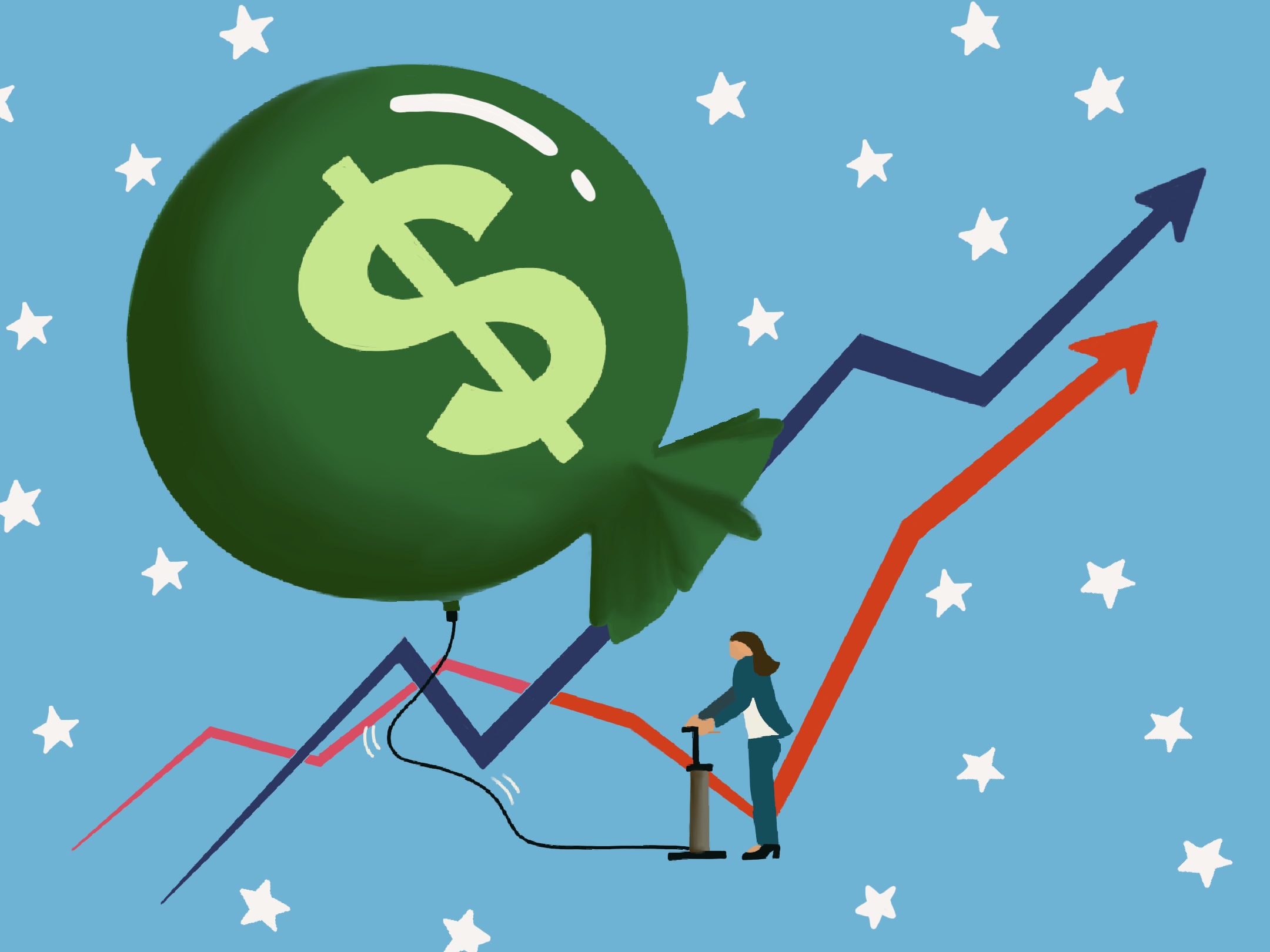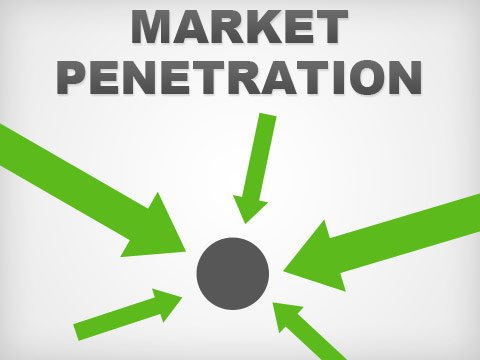As a marketer, it’s important to focus on creating a strong, cohesive marketing strategy that aligns with your business goals and targets the right audience, especially in a time like high inflation. The rising costs and declining sales will constantly put a wrench in your sales and marketing strategies; that’s the power of high inflation Strategies.
Before we discuss marketing strategies against it, let us try to understand it first.
What is High Inflation?
Inflation is an increase in the general price level of goods and services in an economy over a period of time. When the general price level rises, each unit of currency buys fewer goods and services; consequently, inflation reflects a reduction in the purchasing power of money – a loss of real value in the medium of exchange and unit of account within an economy. A chief measure of price inflation is the inflation rate, the annualized percentage change in a general price index (normally the consumer price index) over time.
High inflation can have negative effects on an economy, such as reducing purchasing power and eroding the value of savings. It can also make it more difficult for businesses to plan and budget, as they may need to know how much their costs will increase in the future.
So who is facing the heat of high inflation? Let us find out.
Who’s Feeling the Pinch from High Inflation?
It’s not surprising that inflation is a concern for many Americans, as it can have a significant impact on household budgets and the overall economy. According to a survey, 6 out of 10 Americans have expressed their concerns about inflation, with middle-aged feeling most of it. As many as 61% of respondents in the survey professed to have been significantly affected by inflation.
This speaks volumes of why it has become important for businesses and individuals to be aware of the potential effects of inflation and take steps to manage it. Some strategies that your growth marketing agency can use for coping with high inflation include adjusting prices, cutting costs, diversifying revenue streams, managing cash flow, and communicating with customers. It’s also important for individuals to stay informed about inflation Strategies and consider strategies for protecting their purchasing power, such as by investing in assets that may hold their value better during times of high inflation.
How are Marketers Adapting Their Strategies to Confront Consumers’ Inflation Strategies Concerns?
It’s important to remember that the current economic situation is constantly evolving and that what works for one brand may not work for another. There are several strategies that companies can use to mitigate the impact of price inflation on their business and customers. These include:
- Understanding Customer Behaviour
Companies need to understand how their customers are likely to respond to price increases and how they can adjust their products and pricing strategies to mitigate the impact. For example, they might consider offering smaller package sizes or promotions to attract cash-poor consumers or encouraging multi-unit purchases to incentivize cash-rich consumers.
- Investing in Market research
Companies need to do their own research to understand how consumers are reacting to price inflation and how they can adapt their products and pricing strategies accordingly. This may involve talking to customers directly or using data analytics to better understand market trends.
- Redefining Value
Companies offer smaller package sizes or promote products that offer good value in terms of cost per ounce or monthly consumption cost. They can also focus on reversing engineering products and packaging to hit key attractive retail price points for cash-poor consumers.
- Using Promotions
Companies can consider using promotions to incentivize customers to make purchases, particularly in the case of cash-poor consumers who may be more sensitive to price increases. However, it’s important to be strategic about these promotions and not give away too much in order to maintain profitability.
- Unbundling
Companies can consider offering customers the option to purchase only the products, options, and services that they truly need, rather than bundling everything together. This can help to make it easier for price-sensitive customers to cherry-pick the items that they want and avoid paying for things that they don’t need.
- Monitoring Trade Terms
Companies should be aware of distributors who are paying them more slowly than they are turning over the inventory they purchase from them. In an inflationary environment, these distributors may be making money on the float by stretching their payables. Companies can manage their inventory on a last-in, first-out basis to ensure that increases in their realized selling prices do not trail the increases in their input costs.
- Increasing Relevance
Companies need to persuade customers to reduce their expenditures on other products, not theirs. In tough times, consumers may be more likely to turn to private label or generic brands to save money. Strong brands that can offer a sense of comfort that holds onto consumer loyalty while increasing retail price points. Weaker brands may be at risk of private label or generic substitution.
- Monitor Trade Terms
Beware of powerful distributors paying you more slowly than they turn the inventory they buy from you. In an inflationary environment, they’re making money on the float by stretching their payables. Manage your inventory on a last-in, first-out basis to insure that increases in your realized selling prices do not trail the increases in your input costs.
- Increase Relevance
You need to persuade customers to cut back their expenditures on other products, not on yours. In tough times, consumers need and deserve the occasional treat more than ever. So, if you are Haagen Dazs, tell the consumer to substitute private-label peas for the name brand but not to forego the comfort of curling up on the sofa with a tub of her favorite ice cream. Strong brands can hold consumer loyalty while increasing retail price points. Weaker brands risk private label and generic substitution.
Now let us dive into some more marketing strategies that you can leverage to combat high inflation.
What are the Marketing Strategies to Combat High Inflation?
Marketing professionals are often on the front lines of a company’s interactions with its customers, so they often have a good sense of what is happening in the marketplace. In addition, they are typically responsible for gathering and analyzing data about customer behavior, preferences, and trends and using this information to inform marketing strategies and tactics. This often involves monitoring key performance indicators (KPIs) that provide insight into the effectiveness of marketing efforts and the business’s overall health.
The accounting team is also closely attuned to the company’s pulse, as they are responsible for tracking and analyzing financial data and performance. This includes monitoring financial KPIs such as revenue, profitability, and cash flow and forecasting future financial performance.
By working closely with the marketing team and sharing relevant data and insights, the accounting team can help to inform marketing strategies and ensure that they are aligned with the overall goals and objectives of the business. In addition, great marketers are unique in a business because they usually are the first to sense something brewing in the marketplace.
With that in mind, here are the 4 P’s of marketing that brands can consider when adjusting their marketing approach in response to economic pressures: product, price, place and promotion.
Product
Maintaining the quality and value of your product or service is crucial for maintaining the health of your brand, especially during times of economic uncertainty. On that note, brands should keep continuing their investment in their product pipeline and carry on with advancements while giving enough attention to the following:
- Focus on solving customer problems: Your product or service should be designed to meet the needs and preferences of your target market. By understanding your customers’ pain points and addressing them through your products or services, you can differentiate yourself from competitors and build loyalty.
- Prioritize Customer Experience: The overall experience that your customers have with your brand, including the quality of your product or service, customer service, and interactions with your company, can all contribute to the perceived value of your brand. By paying attention to these elements, you can create a positive and memorable experience for your customers.
- Stay up-to-date with Industry Trends and Innovations: It’s important to keep an eye on what’s happening in your industry and to be proactive about adopting new technologies or approaches that can improve your product or service. This can help you stay ahead of the competition and meet the changing needs of your customers.
- Foster Customer Loyalty: Loyal customers are valuable assets for any business, as they are more likely to make repeat purchases and recommend your brand to others. By consistently delivering high-quality products and services and going above and beyond to meet customer needs, you can encourage loyalty and build a strong and loyal customer base.
Price
Amidst high inflation, companies may need to increase prices to protect profit margins and continue investing in their products, services, and operations. However, it’s important to approach price increases carefully, as higher prices may result in lower volumes due to price elasticity. You can:
- Communicate the value of your products or services: Before increasing prices, it’s important to ensure that your customers understand the value your products or services offer. This includes highlighting the benefits and features of your products, as well as how they solve customer problems or meet customer needs.
- Consider alternative pricing strategies: Instead of increasing prices across the board, companies can consider alternative pricing strategies such as reducing the quantity per pack or adjusting wholesale or retail prices. They can also look at ways to reduce the cost of ingredients or raw materials without affecting the overall quality of their products.
- Use Data and Analytics: Using data and analytics to inform pricing decisions can be a powerful tool for companies looking to maintain profitability and customer loyalty in times of economic uncertainty. By gathering and analyzing data on consumer behavior, preferences, and trends, companies can gain insight into how their customers are likely to respond to price changes and adjust their pricing strategies accordingly.
Place
In times of high inflation, consumers may be more price-sensitive and may look for ways to save money on their purchases. This can lead to shifts in consumer behavior, such as a move towards e-commerce or a downturn in sales at established retail channels.
To ensure that your products remain physically available to your target market, it’s important to closely track where consumers are buying the type of items you promote and adjust your distribution priorities accordingly.
- Analyzing Sales Data: By analyzing sales data, you can better understand which channels are performing well and which are not. This can help you to identify any shifts in consumer behavior and adjust your distribution strategies accordingly.
- Monitoring Customer Feedback: By collecting and analyzing customer feedback, you can gain insight into why consumers are choosing certain channels over others and what factors influence their purchasing decisions.
- Keeping an Eye on Market Trends: By staying up to date on market trends, you can better understand how consumer behavior is changing and how you can adapt your distribution strategies to meet the evolving needs of your target market.
- Partnering with Strategic Distributors: Partnering with strategic distributors can help you to reach new customers and expand your distribution network. Look for distributors that have a strong presence in channels that are performing well and that are aligned with your brand and target market.
Keep Investing In Advertising
Advertising plays a crucial role in building and maintaining a strong brand image and connection with customers. It helps to increase brand awareness, establish market positioning, and create an emotional bond with customers. By consistently promoting your brand and its values through advertising, you can differentiate yourself from competitors and create a lasting impression in the minds of consumers.
According to a 2018 study by the Ehrenberg-Bass Institute, that stop advertising for extended periods of time can experience a significant drop in sales as a result. This is because advertising helps to build and maintain brand awareness and a strong emotional connection with consumers, and a lack of advertising can lead to a decline in these areas.
However, it’s worth noting that the impact of reduced or halted advertising on sales will depend on various factors, such as the size and strength of the brand, the competitiveness of the market, and the effectiveness of the advertising campaign. It’s also important to consider the overall marketing strategy and how other elements, such as product development and customer service, may be affected by a reduction in advertising. It’s generally advisable to consult with a marketing professional or conduct market research before making significant changes to your advertising strategy.
These are things that marketers should adjust during inflation:
- Adjusting Media Channels: It’s important to understand which media channels are most effective for reaching your target audience during times of crisis. For example, if you’re targeting younger consumers, social media might be an important channel to focus on. On the other hand, if you’re targeting an older audience, traditional media such as television or radio might be more effective.
- Focusing on the Right Brands or Products: Consumers may prioritize different products or brands during times of crisis, so it’s important to understand what they are looking for and how your products or services fit into their priorities. If you can show how your products or services can meet their needs during this difficult time, you’ll be more likely to succeed.
- Showing Empathy in Your Storytelling: Empathy is key during times of crisis, as it helps to build trust and create a sense of connection with your customers. By showing that you understand their struggles and are there to support them, you can build a deeper relationship with your customers.
- Activating Human-to-Human Communication: People often turn to their friends, family, and other trusted sources for information and advice during times of crisis. By leveraging word-of-mouth marketing, user-generated content, and influencer marketing, you can tap into this natural desire for peer-to-peer communication and connect with your customers on a more personal level.
Overall, it’s important to be responsive and adaptable during times of crisis and to communicate with your customers in a way that shows you understand their needs and are there to support them.
By following the strategies outlined above, you’ll be well-positioned to communicate effectively with your customers and build strong relationships during times of crisis.
Do Smart Marketing!
When brands understand and anticipate customers’ habits, preferences, and behaviors (the core of marketing), they can respond to crises (read inflation here) efficiently. The organization that continues to invest in its advertising department does well than the ones who cut budgets in an effort to save their bottom line. That being said, marketers must implement the best growth marketing strategy and make adjustments to their media channels, storytelling, pricing and distribution strategy, and product portfolio to deliver value to consumers amidst economic uncertainty, inflation Strategies, or any crisis.



